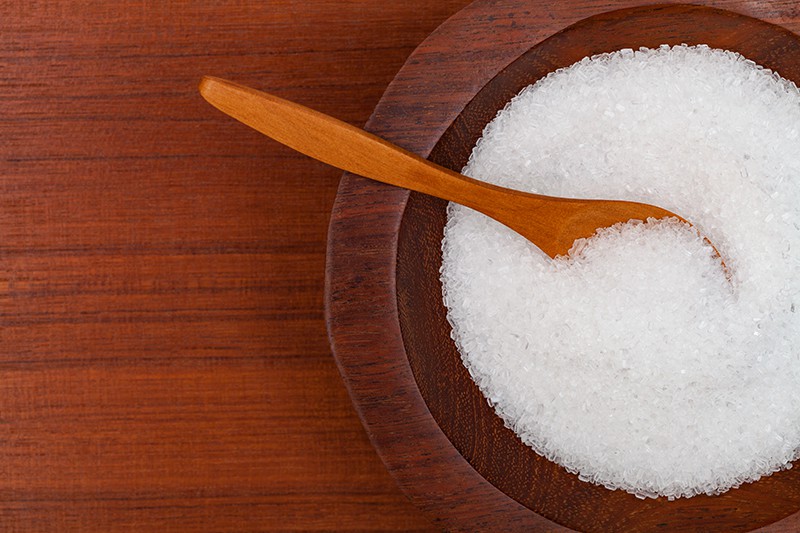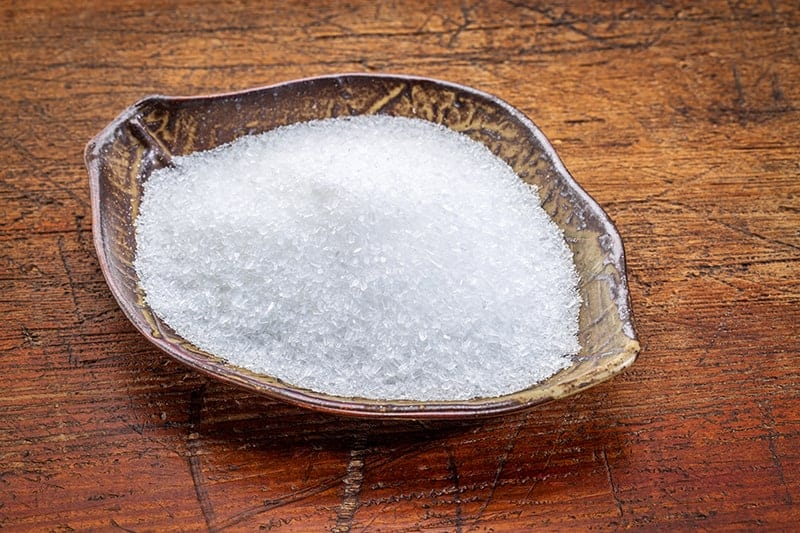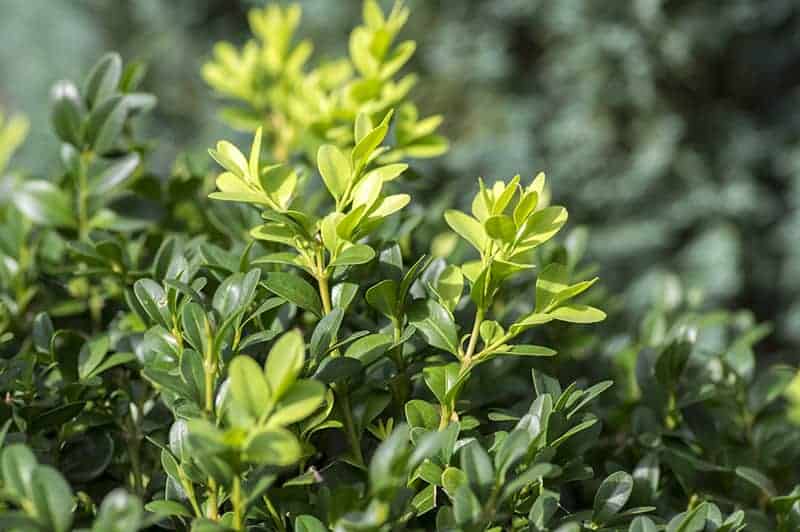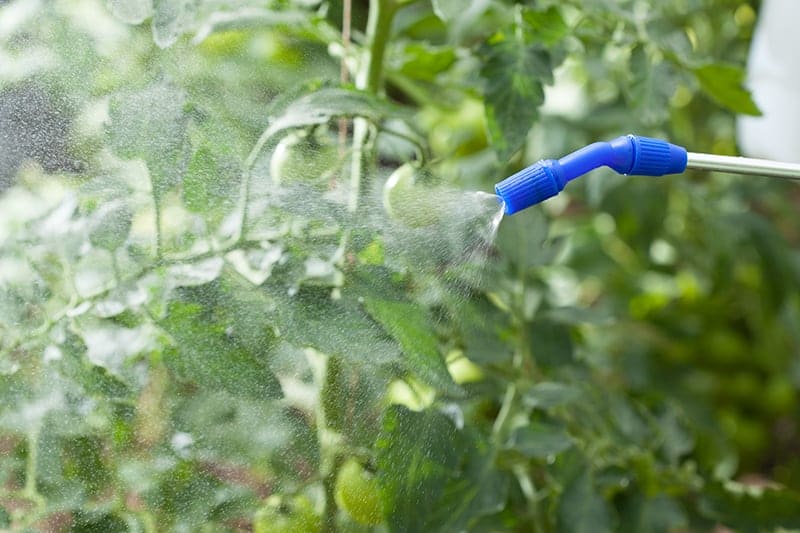Home growers and gardeners tend to be quick to learn one of the most uncom... Read More
- Home >
- Epsom Salt for Plants – Tips For Using Epsom Salt In The Garden
Epsom Salt for Plants – Tips For Using Epsom Salt In The Garden

If you grow roses or tomatoes, it’s likely that you’ve heard of people treating their plants with Epsom salts. This is hailed as ‘the best-kept gardening secret’ by some, though Epsom salts have been used in gardening for hundreds of years. But how can Epsom salt benefit your plants, and should you be using it in your garden?
What Is Epsom Salt?
Epsom salt is a natural mineral that is made from hydrated magnesium sulfate. It was discovered in an underground spring in the town of Epsom in England in the early 1600s. It has since been used for treating many conditions in humans, animals, and plants. Chemically, it has 10% magnesium and 13% sulfur. These are nutrients that are essential to many plants for the roles they play in growth and development.
What Does Epsom Salt Do for plants?
The potential benefit of Epsom salt on plants is a widely debated topic among gardeners. Some gardeners believe using Epsom salts on their plants is the reason for their impressive growth, while others claim Epsom salts are not only useless at improving plant health, but that adding it to plants can actually be detrimental to the condition of the soil. Here, we’ll look at various points of view and evidence to determine which plants, if any, would benefit from supplements of Epsom salts.
Improves Nutrient Uptake
Epsom salt contains magnesium, which is an essential nutrient that helps a plant perform some of its essential functions. One of these is that magnesium increases a plant’s ability to absorb other nutrients, such as nitrogen and phosphorus, without which it would struggle to thrive. Epsom salt is, therefore, not only useful at supplying the plant with magnesium, but in doing so, it is also helpful in ensuring the plant is able to take in the optimum levels of other vital nutrients from the soil.
Makes Plants Greener
Magnesium, one of the main elements of Epsom salt, is said to make plants greener. It does this because magnesium is useful in the plants’ creation of chlorophyll, which is what determines a plant’s leaf color, and ultimately results in the plant’s foliage appearing lusher. Chlorophyll is also important for the plant to photosynthesize, a process that enables the plant to make food and energy for itself.
Provides Micronutrients
Epsom salts contain two micronutrients which are useful for the plant, and these are magnesium and sulfur. Some gardeners argue that these micronutrients are not vitally important for the plant, while others claim that they make all the difference in a plant’s successful growth. In fact, the type of plant you have will determine whether these micronutrients are essential or not.
Many leafy vegetable crops, or some types of beans, will perform brilliantly even with very low magnesium levels; therefore, Epsom salts would not make any noticeable difference to the growth of these plants. Roses, peppers, and tomato plants require high levels of magnesium to thrive, so it is these plants that would benefit from the micronutrients contained within Epsom salts.
The National Gardening Association performed studies which revealed that roses grown with Epsom salts as opposed to those grown with just commercial fertilizers produced more flowers with bigger blooms, while pepper plants produced larger peppers (The National Gardening Association).
Deters Pests
Epsom salt can help to deter some garden pests, including voles and slugs. Treating your plants with Epsom salts may decrease numbers of slugs in your garden, but it likely won’t be the miracle pest deterrent you are hoping for. Realistically, if you are looking to treat your pest problem, then Epsom salts should not be your first port of call, however, if you are using Epsom salts to help your roses grow, then their ability to discourage some pests from setting up camp is a beneficial side effect.
Balances Nutrient Levels
Epsom salts can help balance nutrient levels in particular types of soils. If your plants are not performing well and you suspect a nutrient deficiency, you can get your soil tested to find out what is missing. Magnesium is a common nutrient that is deficient in agricultural soil or soil, which has been overworked, and it will need replacing to ensure plants growing in that soil remain healthy. If the magnesium levels of your soil have been depleted from years of growing tomatoes, for example, then supplementing your soil with Epsom salts could balance out the nutrient levels and improve future crops.
Neutralizes Soil pH
If you have a high soil pH in excess of 7.5 pH, then adding Epsom salts to it could help to neutralize it. Many plants will struggle to grow in soils that are too alkaline, and so reducing the pH level of the soil in these instances will be very beneficial. The Epsom salts should be worked into the soil, and will gradually increase the acidity of the soil over time.
When Not to Use Epsom Salts in the Garden
Epsom salts are known to be beneficial to some plants in some situations. Primarily, roses, tomatoes, and peppers are the key plants that can take advantage of the magnesium levels contained in Epsom salts. However, there are some situations in which Epsom salts should not be used. These are as follows.
As a Main Fertilizer
Epsom salts contain micronutrients which are beneficial to the health of many plants. However, the main nutrients which plants require are nitrogen, phosphorus, and potassium, which are referred to in the gardening world as N-P-K. The nutrient value of Epsom salts is 0-0-0, meaning they contain no traces at all of nitrogen, phosphorus, or potassium. If you do choose to use Epsom salts on your plants, it’s important that you are aware that Epsom salts are not a substitute for fertilizer. Epsom salts do not contain any of the essential nutrients a plant needs, and instead, you should be feeding your plants with a balanced fertilizer to help sustain them. Epsom salts can be beneficial, but they should be used as an additional secondary supplement, and not as the primary means of feeding a plant.
Magnesium-Deficient Plants
If you have found that your plant is magnesium deficient, you might instantly assume that your soil is lacking magnesium. In fact, a magnesium deficiency in a plant doesn’t always mean it is growing in magnesium-deficient soil. Some plants suffer from magnesium deficiencies because the soil is too high in phosphorus, which prevents a plant from being able to adequately absorb the soils magnesium.
Adding Epsom salts in this instance will not make any difference because it is the phosphorus level of the soil, which needs to be decreased to enable a plant to absorb magnesium. Treating the soil with Epsom salts will be pointless and will delay you find the real reason that your plants are not thriving. It is important to have your soil tested to determine the correct problem before mistakenly treating it for a deficiency.
Acidic Soil
Epsom salts can be useful at helping to neutralize alkaline soil, and so the opposite would be true in acidic soil. If you have acidic soil, then you should refrain from using Epsom salts in your garden, as this could exacerbate the problem.
How Much Epsom Salt For Plants
There are many different ways to use Epsom salts in the garden, and the ratio you can use will differ depending on the application method, and the plants you are treating.
For a general Epsom salt supplement that can be used in the garden and on houseplants, use two tablespoons of Epsom salt per gallon of water, and use this to water your plants once each month in between regular watering. For roses, work in half a cup of Epsom salts around the base of the plant to encourage new growth and flowering.
When initially planting roses, it is recommended that you add one spoon of Epsom salts to the hole before lowering the plant in. Shrubs, including azaleas and rhododendrons, can benefit from an Epsom salt feed once a month, while trees can be treated with Epsom salts around three times each year.
How to Apply Epsom Salt to Plants
Epsom salts in the garden are most commonly used as a foliar spray. You simply mix in the required amount of Epsom salt with water and spray it on the leaves of a plant. Ideally, do this in springtime just as new leaves are emerging, and again after blooming. Epsom salts can also be added to water and used as a soil drench, watering the plant at the soil level. When planting, you can add Epsom salts directly to the soil, or work it into the soil without diluting it in water first.
Conclusion
Epsom salts contain micronutrients and are a beneficial supplement for some plants, especially roses, tomatoes, and peppers. They can help to improve soil quality in some instances, though it would be detrimental in others, such as in acidic soil. Epsom salts do not contain any key nutrients, and therefore should not be used in place of a balanced fertilizer.
Related Content
-
All about Spider Mites and How to Get Rid of Them
-
Fungus Gnats – How to Identify, Prevent, and Control Them
If you have spotted a small dark fly buzzing around your hydroponic garden... Read More
-
8 Best Bedroom Plants That Purify The Air & Improve Your Sleep Quality
If you’ve been thinking of adding some plants to your sleeping quarters, t... Read More
-
Best CFL Grow Lights – Grow Guide & Reviews
CFLs are no doubt among the most popular light types used in the last 20 y... Read More


